I've connected an Arduino to a MOSFET to control a valve.
I've connected the Arduino's GND to the negative lane (word?) on the breadboard (for clarity modeled by SW1 in the circuit diagram). I noticed that if I don't do this, it does not work (no voltage at the gate) - why do I need to use the same ground?
And: Is my circuit any good or could it be damaging my Arduino?


simulate this circuit – Schematic created using CircuitLab
